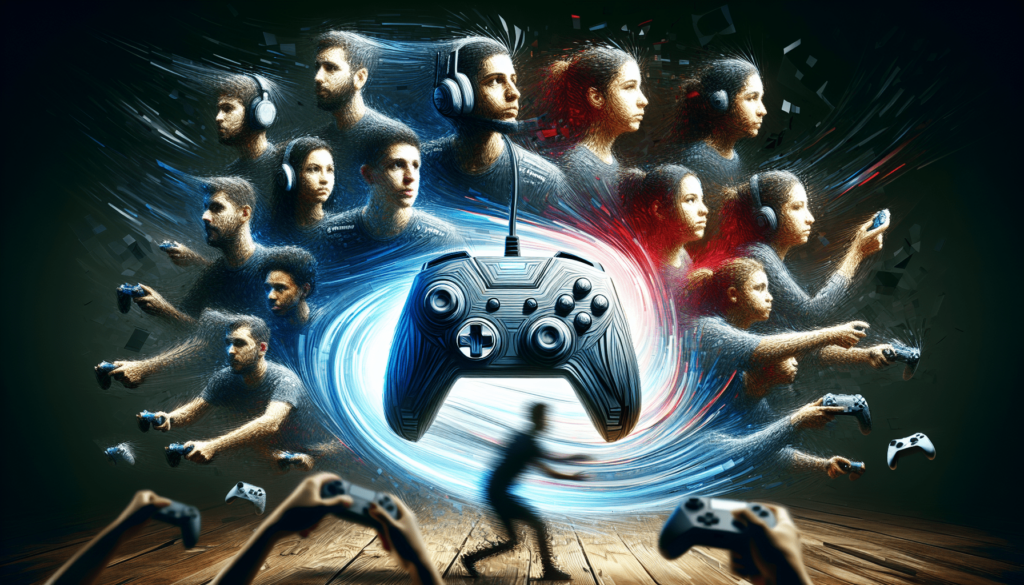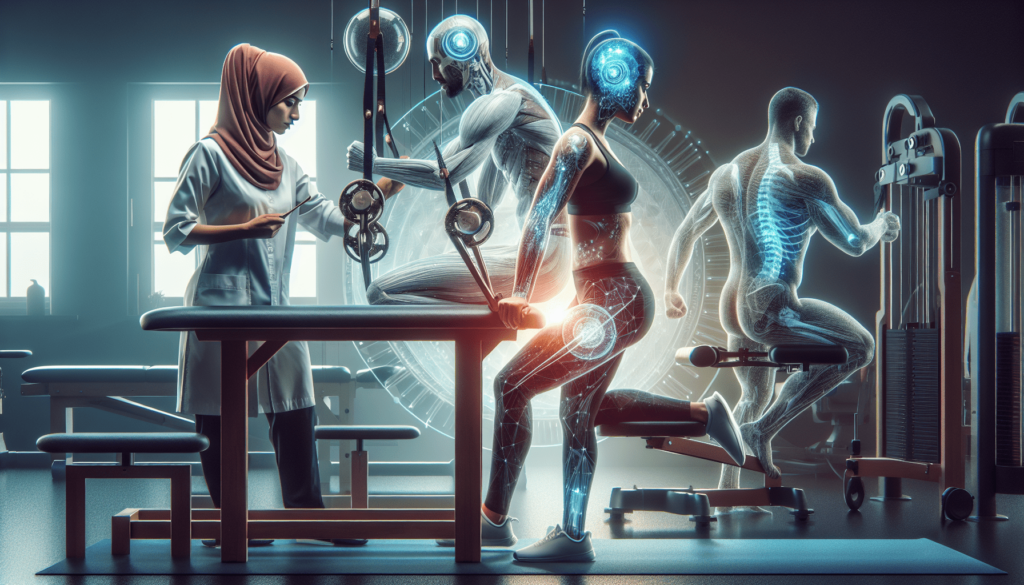Imagine a world where the intricate world of online gaming like 토토사이트 has the power to turn ordinary individuals into extraordinary heroes. In “The Transformation of Players: From Pixels to Glory,” we embark on a journey deep into the underbelly of the gaming realm, exploring how this virtual universe has the ability to shape and mold individuals into champions. Through riveting narratives and powerful anecdotes, we will uncover the secret behind how pixels have the potential to unlock greatness in the most unexpected of players. Brace yourself, for we are about to embark on an adventure that will change your perception of the gaming world forever.
The Rise of Online Gaming
Online gaming has revolutionized the way people play and enjoy video games. With the advent of the internet and advancements in technology, gaming has undergone a significant transformation. The rise of online gaming has brought about a multitude of changes, from the evolution of gaming consoles to the popularity of online gaming platforms.

The Evolution of Gaming Consoles
Gaming consoles have come a long way since their inception. From simple pixelated graphics to high-definition visuals, the evolution of gaming consoles has been remarkable. This evolution has allowed players to immerse themselves in highly realistic and visually stunning worlds. With each new generation of consoles, the gaming experience becomes more sophisticated, pushing the boundaries of what is possible in gaming.
The Birth of Online Multiplayer Games
One of the most significant milestones in the history of gaming was the birth of online multiplayer games. These games allowed players from all over the world to connect and play together. The ability to team up with friends or compete against strangers added a whole new dimension to gaming. Online multiplayer games fostered a sense of community and camaraderie among players, creating a social aspect that was not present in traditional single-player games.
The Popularity of Online Gaming Platforms
Online gaming platforms have become a central hub for gamers worldwide. Platforms like Steam, Xbox Live, and PlayStation Network have gained immense popularity due to their vast libraries of games and seamless online multiplayer capabilities. These platforms offer a convenient way for players to find new games, connect with friends, and join gaming communities. The rise of online gaming platforms has made gaming more accessible and connected than ever before.
The Power of Virtual Worlds
Online gaming has the power to transport players to virtual worlds and provide them with immersive and captivating experiences. The ability to create personal avatars and explore vast and detailed virtual environments has become a cornerstone of modern gaming.
Immersive Gameplay Experiences
The advancements in technology and graphics have allowed game developers to create increasingly immersive gameplay experiences. From breathtaking landscapes to intricate character models, players can now feel like they are part of the game world. The immersion in these virtual worlds can be so profound that players often find themselves emotionally invested in the stories and narratives presented within the game.
Creating Personal Avatars
Online gaming allows players to create and customize their own avatars, giving them a chance to express their creativity and individuality. Whether it’s choosing the appearance, clothing, or abilities of their avatar, players have the freedom to design a character that represents them in the virtual world. This personalization adds a level of identification and connection to the game, making the experience more personal and enjoyable.
Exploring Vast and Detailed Virtual Environments
Online games often feature expansive and intricately designed virtual environments for players to explore. From sprawling cityscapes to sprawling landscapes, these environments offer a sense of wonder and adventure. Whether it’s discovering hidden treasures, uncovering secret passages, or venturing into uncharted territories, the exploration of these virtual worlds can provide endless hours of entertainment and discovery.
The Social Aspect of Online Gaming
One of the most compelling aspects of online gaming is the ability to form and join gaming communities. Through shared interests, players can build friendships and collaborate with others in team-based games.
Forming and Joining Gaming Communities
Online gaming platforms have made it easier than ever for players to form and join gaming communities. These communities are made up of players who share common interests and enjoy playing together. Whether it’s joining a clan in a first-person shooter or becoming a member of a guild in a role-playing game, these communities offer a sense of belonging and camaraderie.
Building Friendships through Shared Interests
Online gaming provides a unique opportunity for people to connect and build friendships. Through the shared interest in gaming, players can find like-minded individuals who share their passion. Whether it’s teaming up to take on challenging quests or simply chatting and joking around, these friendships can extend beyond the virtual world, leading to meaningful connections in real life.
Collaborating with Other Players in Team-based Games
Team-based games have become increasingly popular in the world of online gaming. Whether it’s working together to complete objectives or competing against other teams, collaboration and teamwork are essential for success. These games encourage players to communicate effectively, strategize, and rely on each other’s strengths. The collaboration and cooperation required in team-based games not only enhance the gaming experience but also teach valuable skills that can be applied in real-life situations.
The Competitive Nature of eSports
Online gaming has given rise to a new era of professional gaming known as eSports. With millions of dollars in prize money and celebrity gamers, eSports has become a global phenomenon.
Rise of Professional Gaming Leagues
eSports has evolved into a highly competitive industry with organized professional gaming leagues. These leagues host tournaments and events where players and teams compete against each other for glory and financial rewards. The rise of professional gaming leagues has elevated gaming to a whole new level, turning it into a legitimate sport with its own dedicated fan base.
Millions of Dollars in Prize Money
eSports has captured the attention of sponsors and investors, leading to an unprecedented prize pool for the most prestigious tournaments. The allure of significant financial rewards has attracted top-tier talent from around the world, resulting in intense and high-stakes competitions. The potential for lucrative earnings has turned gaming into a viable career option for many skilled players.
Celebrity Gamers and eSports Events
eSports events have become grand spectacles, attracting millions of viewers worldwide. These events often feature celebrity gamers, charismatic hosts, and elaborate production values. The popularity of eSports has given rise to gaming superstars who are idolized by fans and have achieved fame and fortune through their gaming prowess. The success of these events and the recognition of these celebrity gamers have further solidified gaming as a mainstream form of entertainment.
Skills and Strategies for Success
Online gaming requires a combination of skills and strategies to succeed. From hand-eye coordination to problem-solving abilities, players must hone their abilities to thrive in virtual worlds.
Developing Hand-eye Coordination
Online games often require fast reflexes and precise movements. Players must develop hand-eye coordination to accurately control their characters and perform actions within the game. The constant need to react quickly to changing situations and navigate complex environments helps improve motor skills and coordination.
Improving Problem-solving Abilities
Many online games feature intricate puzzles and challenges that require players to think critically and problem-solve. From analyzing clues to devising strategies, players must use their intellect to progress through the game. This constant mental stimulation enhances problem-solving abilities and can have a positive impact on real-life situations that require critical thinking.
Mastering Complex Game Mechanics
Online games often have complex systems and mechanics that players need to understand and master. From mastering skill rotations in a massively multiplayer online role-playing game to memorizing map layouts in a competitive first-person shooter, players must immerse themselves in the gameplay mechanics to succeed. This ability to learn and adapt to intricate systems can be applied to other areas of life, such as learning new technologies or understanding complex concepts.
The Psychological Impact of Gaming
While online gaming offers numerous benefits, it is essential to acknowledge its potential psychological impact. Online gaming can enhance cognitive functions, provide stress relief, but it can also lead to addictive behavior and negative consequences.
Enhancing Cognitive Functions
Research has shown that online gaming can enhance cognitive functions such as memory, attention, and problem-solving skills. The mental stimulation provided by gaming can help improve cognitive abilities and even delay cognitive decline in older individuals. Engaging in strategic gameplay requires players to think quickly and make informed decisions, stimulating brain activity and promoting mental agility.
Providing Stress Relief and Relaxation
For many individuals, online gaming serves as a form of stress relief and relaxation. Immersing oneself in a virtual world can provide an escape from the pressures and demands of everyday life. The ability to explore new worlds, engage in thrilling adventures, and overcome challenges can help reduce anxiety and provide a sense of accomplishment and satisfaction.
Potential Addictive Behavior and Negative Consequences
It is important to acknowledge that online gaming can become addictive and lead to negative consequences. Excessive gaming can disrupt daily routines, negatively affect relationships and social interactions, and interfere with work or academic performance. It is essential for players to maintain a healthy balance between gaming and real-life responsibilities, and seek help if they feel their gaming habits are becoming problematic.
Building a Career in Gaming
With the growth of online gaming, numerous career opportunities have emerged in the industry. From game development and design to professional gaming and content creation, the gaming industry offers a range of avenues for individuals to pursue their passion.
Game Development and Design
Game development and design involve creating the worlds, characters, and mechanics that make up a game. This field requires a blend of creativity, technical skills, and a deep understanding of player experiences. Game developers and designers work together to bring virtual worlds to life, creating captivating and engaging experiences for players.
Professional Gaming and Streaming
Professional gaming and streaming have become legitimate career paths for highly skilled players. Professional gamers compete in tournaments, earn sponsorships, and stream their gameplay to a dedicated fan base. This career path demands exceptional gaming skills, charisma, and the ability to entertain and engage viewers.
Content Creation and Influencing
Content creation and influencing have become popular career options in the gaming industry. Content creators produce videos, live streams, and other forms of content related to gaming, attracting audiences and building a following. These individuals can collaborate with brands, generate revenue through sponsorships, and influence trends within the gaming community.
The Evolution of Gaming Equipment
The gaming equipment industry has witnessed significant advancements in recent years. From improved hardware to virtual reality gaming, technology has had a profound impact on gameplay and the overall gaming experience.
Advancements in Gaming Hardware
Gaming hardware has evolved to meet the demands of modern games. From powerful processors and advanced graphics cards to high-resolution displays and ergonomic controllers, gaming hardware has become more sophisticated and specialized. These advancements allow for smoother gameplay, better visual fidelity, and enhanced immersion.
The Rise of Virtual Reality Gaming
Virtual reality (VR) has taken gaming to new heights by immersing players in fully interactive virtual environments. VR headsets and accompanying peripherals allow players to experience games in a whole new way. The ability to physically move and interact with the virtual world creates a sense of presence and realism that is unparalleled.
Impacts of Technology on Gameplay
Technological advancements have had a profound impact on gameplay mechanics and design. From realistic physics simulations to advanced artificial intelligence, technology has made games more realistic and dynamic. These advancements have opened up new possibilities for game developers, allowing them to create more immersive and engaging experiences.
Educational Benefits of Gaming
Contrary to popular belief, online gaming can have educational benefits. From improving problem-solving and critical thinking skills to teaching historical and cultural concepts, gaming can be a valuable tool for learning.
Improving Problem-solving and Critical Thinking Skills
Many online games require players to think critically and solve complex problems. Whether it’s deciphering puzzles, strategizing in real-time battles, or analyzing data in simulation games, players must employ problem-solving and critical thinking skills to progress. This constant mental stimulation can help improve these skills, which are valuable in various academic and professional settings.
Teaching Historical and Cultural Concepts
Certain online games incorporate historical and cultural elements, providing players with a unique opportunity to learn about different time periods and civilizations. From historically accurate settings to culturally significant events and characters, these games can serve as educational tools that spark curiosity and foster interest in history and culture.
Enhancing Creativity through Game Design
Online gaming allows players to explore their creative side through game design. Many games offer in-depth level editors and modding tools that enable players to create their own unique experiences. This creative outlet promotes problem-solving, critical thinking, and artistic expression, helping individuals develop their creativity and design skills.
The Future of Gaming
The future of gaming looks promising, with advancements in virtual reality integration, artificial intelligence, and the continued growth of eSports.
Virtual Reality Integration
Virtual reality is expected to play an increasingly prominent role in gaming. As technology continues to improve, VR experiences will become more immersive and realistic. The ability to step into fully interactive virtual worlds will revolutionize the way games are played and experienced.
Artificial Intelligence in Gaming
Artificial intelligence (AI) will continue to impact gaming in significant ways. AI-driven NPCs (non-playable characters) will become more intelligent and lifelike, enhancing the player’s immersion in the game world. AI will also play a role in procedural content generation, creating dynamic and ever-evolving game environments.
Continued Growth of eSports
The growth of eSports shows no signs of slowing down. As the industry becomes more established, we can expect higher prize pools, more celebrity gamers, and increased viewership. eSports will likely continue to gain recognition as a legitimate sport and attract a wider audience, further cementing its place in the world of entertainment.
In conclusion, online gaming has transformed the 토토사이트 gaming landscape, providing players with immersive experiences, social interactions, and new career opportunities. From the evolution of gaming consoles to the rise of virtual reality, the advancements in technology have brought gaming to new heights. While online gaming offers various benefits, it is essential to approach it responsibly and maintain a healthy balance. As technology continues to advance, the future of gaming looks bright, promising even more innovative and exciting experiences for players around the world.











